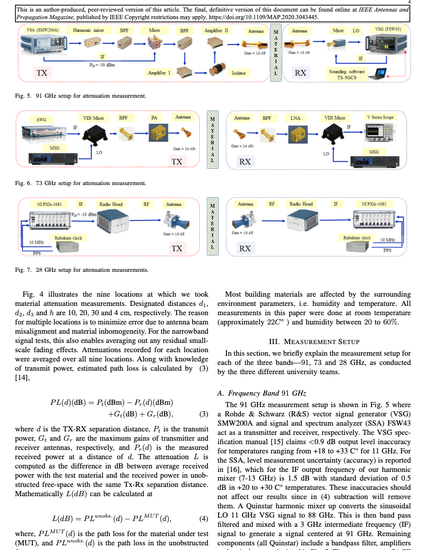
Future cellular systems will make use of millimeter-wave (mm-wave) frequency bands. Many users in these bands are located indoors, i.e., inside buildings, homes, and offices. The typical building material attenuations in these high-frequency ranges are of interest for link budget calculations. In this article, we report on a collaborative measurement campaign to find the attenuation of several typical building materials in three potential mm-wave bands (28, 73, and 91 GHz). Using directional antennas, we took multiple measurements at multiple locations using narrow-band and wideband signals and averaged out residual small-scale fading effects. The materials include clear glass, drywall (plasterboard), plywood, acoustic ceiling tile, and cinder blocks. The specific attenuations range from approximately 0.5 dB/cm for ceiling tile at 28 GHz to approximately 19 dB/cm for clear glass at 91 GHz.
© 2021 IEEE. Personal use of this material is permitted. Permission from IEEE must be obtained for all other uses, in any current or future media, including reprinting/republishing this material for advertising or promotional purposes, creating new collective works, for resale or redistribution to servers or lists, or reuse of any copyrighted component of this work in other works. https://doi.org/10.1109/MAP.2020.3043445

For a complete list of authors, please see the article.